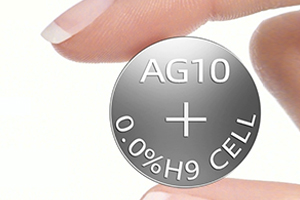What Does an AC/DC Adapter Do? Types and Choosing Guide
Author:admin Date: 2025-02-02 01:38 Views:85
This article will introduce the working principle of AC/DC adapters, common types, and key factors to consider when shopping, to help you quickly choose the right adapter.
What is a AC/DC Adapters?
An AC/DC adapter, also known as a power adapters, AC DC converters, or plug-in power supply, is a device that converts alternating current (AC) from an electrical outlet to direct current (DC) for use in a variety of electronic devices.
AC (alternating current) is a current in which the flow of charge periodically changes direction.
DC (direct current) is a unidirectional flow of charge with a current that is fixed in one direction.
The most common AC/DC adapters used in everyday life are chargers for smartphones, tablets and laptops.
How Do AC/DC Adapters Work?
An AC/DC adapter converts AC power to DC power in several steps:
The conversion process begins when the AC/DC adapter receives high voltage AC power from a wall outlet.
Inside the adapter, a transformer reduces the high voltage AC to a lower voltage.
Next, a rectifier converts this low voltage AC to pulsating DC, which causes the current to flow in one direction, but is still unstable. To smooth out the fluctuations and reduce ripple, a filter (usually a capacitor) smoothes out the waveform.
Finally, a voltage regulator stabilizes the output voltage to meet the specific requirements of the connected device.
Types of AC/DC Adapters
There are several types of AC/DC adapters,each designed for specific applications:
Wall Mount (Plug-in) Adapters:This is the most common type of power adapter in daily life, which can be plugged directly into a wall outlet without the need for an external power cord, and is mainly used to charge low power devices such as smartphones and tablets.
Desktop (External) Adapters:Desktop adapters are large and consist of a power brick, a power cord, and a cable for connecting the device, and they are used for more powerful devices such as laptops, monitors, and printers.
Power over Ethernet(PoE) Adapters: PoE adapters transmit power and data over a single Ethernet cable. Commonly used for devices that require power and network connectivity, such as IP cameras, wireless access points and VoIP phones.
Outdoor/Waterproof Adapters: Designed for use in outdoor environments, these adapters are weatherproof and can withstand harsh conditions, often used in outdoor security cameras and garden equipment.
Industrial Adapters: These adapters are designed for heavy duty applications such as automation equipment, machinery and control systems. They are designed to operate under extreme conditions such as high temperatures, vibration and high humidity.

AC/DC Adapters Type
Key Considerations When Choosing an AC/DC Adapters
1. Input voltage:
The input voltage of the adapter should meet local grid standards. For example:
Europe/UK: 230V
US/Canada: 120V
Many adapters support wide input ranges (e.g., 100-240V) for worldwide use.
2. Output voltage:
The adapter must provide the correct output voltage for the device. Common output voltages are 5V, 9V, 12V, 15V and 24V.
Check the voltage requirements of the device to avoid damage or malfunction.
3. Output Current:
The output current (in amps) should match the device requirements. For example, if the device requires 12V and 2A, the adapter should provide at least 12V and 2A.
Too little current will prevent the device from powering up, while too much current will not damage the device, but may result in inefficiency or wasted power.
4. Power rating:
Power (in watts, W) is calculated as follows:
Power (W) = Voltage (V) x Current (Amps)
For example, a 12V 1A adapter will provide 12W of power. Select an adapter that provides equal to or greater than the maximum power required by the device.
5. Plug Type:
– Input Plug: The plug must be compatible with your local wall socket (e.g. flat plug in the USA, square plug in the UK, round plug in Europe/Australia).
– Output plug: usually a DC connector that must match the input port on the unit.
6. Safety features:
Look for these safety protections, including over-current protection, over-voltage protection, short-circuit protection, and surge protection, which help prevent damage to the device and enhance your safety of use.
7. Certifications and standards:
Certain devices (e.g., medical devices) need to meet specific certifications (e.g., UL, CE) to comply with safety standards and reduce the risk of electrical hazards or fire.

AC/DC Adapter Plug Types


